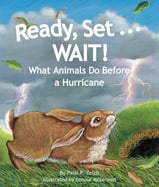Alignment to Standards for MT

| Grade | Number | Standard |
|---|---|---|
| 1 | S4.1.1-4 | Describe and give examples of earths changing features: Earth, planet, star, sun, land, water, lake, pond, river, mountain, desert, valley, volcano, ocean |
| 1 | S4.4.gr1.A. | Identify elements of weather: temperature, wind, rain, snow, clouds |
| 2 | S3.1.gr3,4 | plants and animals have structures and systems that serve different functions for growth, survival, and reproduction |
| 2 | S4.1.grK-4 | Describe and give examples of earths changing features |
| 2 | S4.4.gr2.B. | characteristics of different types of weather conditions precipitation, weather, water, rain, snow, temperature, wind |
| 2 | S4.5.grK-4. | Identify seasons and explain the difference between weather and climate |
| 2 | S5.1.gr2.C. | Explain how various technologies are used in the community technology, tools, community |
| 3 | S3.1.gr3.B. | Identify plant and animal structures, i.e., plants: root, stem, leaf. animal: bones, skin living, plant, animal, energy, habitat, nutrients, oxygen |
| 3 | S3.4.gr3-4 | cause and effect relationships between nonliving and living components with ecosystems; and explain individual response to the changes in the environment including identifying differences between inherited, instinctual, and learned behaviors |
| 3 | S4.1.gr3.D. | Identify causes of erosion |
| 3 | S4.5.gr3.A. | Distinguish between weather and climate |
| 4 | S3.1.gr4.D. | Identify that animals have systems for certain functions |
| 4 | S3.4.gr4.B. | Identify adaptations in a variety of organisms that are specific to survival in their environment. |
| 4 | S3.4.gr4.C. | Define instinctual behaviors, inherited behaviors, and learned behaviors. |
| 4 | S3.4.gr4.D. | Classify living things by instinctual, inherited, and learned behaviors. |
| 4 | S3.4.gr4.E. | Compare and contrast the instinctual, inherited, and learned behaviors |
| 4 | S4.1.gr4.B. | Describe the changes that occur to earth features in each event |
| 4 | S4.1.gr4.C. | Illustrate the effects of the changes in Earths surface |
| 4 | S6.1.gr4.B. | Identify and discuss historical examples of scientific or technological contributions that impacted a community, a culture and a society; including Montana American Indians society, culture, community |
| 4 | S6.2.gr4.B. | Identify and describe examples of scientific understanding that was contributed to by multiple scientists |
| K | S5.1.grK A. | Identify examples of technology (products and processes) |
| K-4 | S3.K-4 | characteristics, structures and function of living things, the process and diversity of life, and how living organisms interact with each other and their environment. |
| K-4 | SS K-4 2.7. | technology in communications, transportation, information processing, medical, or other areas as it contributes to or helps resolve problems. |
| K-4 | SS K-4 3.1. | identify and use various representations of the Earth (e.g., maps, globes, photographs, latitude and longitude, scale). |
| K-4 | SS K-4 3.2. | locate on a map or globe physical features (e.g., continents, oceans, mountain ranges, land forms) natural features (e.g., flora, fauna) and human features (e.g., cities, states, national borders). |
| K-4 | SS K-4 3.5. | use appropriate geographic resources (e.g., atlases, databases, charts, grid systems, technology, graphs, maps) to gather information about local communities, reservations, Montana, the United States, and the world. |
| K-4 | SS K-4 4.5. | identify and illustrate how technologies have impacted the course of history (e.g., energy, transportation, communications). |